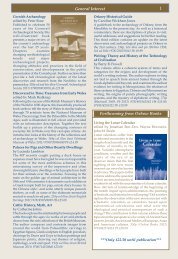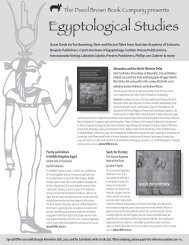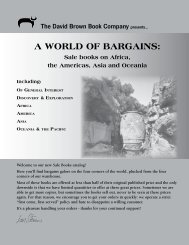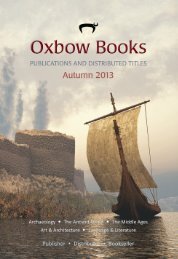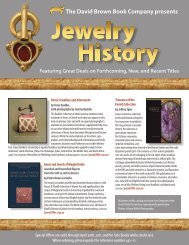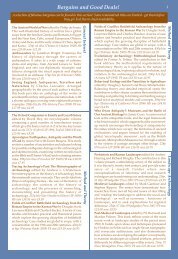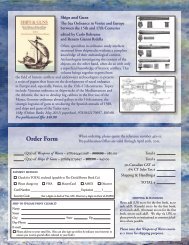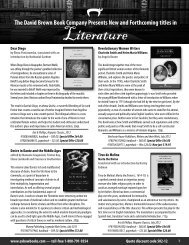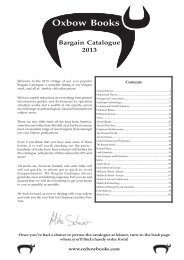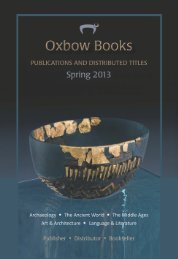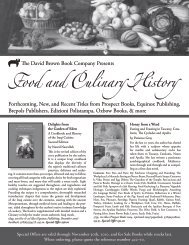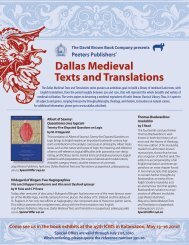MARY ROSE:YOUR NOBLEST SHIPPE
MARY ROSE:YOUR NOBLEST SHIPPE
MARY ROSE:YOUR NOBLEST SHIPPE
Create successful ePaper yourself
Turn your PDF publications into a flip-book with our unique Google optimized e-Paper software.
The English warship Mary Rose was sunk in the Solent,<br />
between Portsmouth and the Isle of Wight, during a<br />
naval battle against a French fleet on 19 July 1545. Over<br />
400 men died in her. Her wreck was discovered in 1971<br />
by a team of divers led by Alexander McKee, and was<br />
subsequently excavated as an archaeological site by a<br />
team led by Margaret Rule. A major part of the ship’s<br />
starboard side and parts of four decks had survived<br />
buried in the sea-bed, together with a considerable<br />
amount of the ship’s contents, including the remains of<br />
many of her crew. The ship’s structure was raised in<br />
1982, and subsequently underwent preservation in<br />
Portsmouth Dockyard where a Mary Rose museum was<br />
created.<br />
Since then the Mary Rose Trust has carried out a<br />
huge amount of archaeological recording and research<br />
to find out what the ship was like and how she was used.<br />
Much more study is needed, but the interim results are<br />
being published in four volumes of which this is Volume<br />
2, with a fifth dedicated to describing the conservation<br />
processes. Volume 1 describes the sixteenth century<br />
history of the ship, the discovery of the wreck in the<br />
nineteenth century, its rediscovery in 1971, and its<br />
subsequent excavation and recovery (Sealed by Time: the<br />
loss and recovery of the Mary Rose). Volume 2 describes<br />
the ship; Volume 3 describes the weapons (Weapons of<br />
Warre: the armaments of the Mary Rose); and Volume 4<br />
descibes the rest of the objects that were found,<br />
including artefacts, human remains, animal bones, and<br />
environmental samples (Before the Mast: life and death<br />
aboard the Mary Rose). Throughout the text that follows<br />
these volumes are referred to in a simplified manner by<br />
the abbreviation AMR (eg, AMR Vol. 1, xx–xx).<br />
The precise aim of this second volume is to describe<br />
as much of the remains of the ship as possible, and to use<br />
this as the basis for reconstructing the vessel as she was<br />
in 1545. Fortunately, there are also valuable clues to<br />
suggest what the ship may have been like when first built<br />
in 1511.<br />
When this interim programme of publication was<br />
planned the ‘brief’ from the Mary Rose Trust and the<br />
Heritage Lottery Fund, that financed the work, was to<br />
publish only existing research. However, it soon emerged<br />
that not enough archaeological work had been<br />
completed to make this possible because the Mary Rose<br />
Trust had, rightly, made as its priority the cataloguing<br />
and conservation of the ship’s structure and the finds.<br />
Most important was that there were no overall drawings<br />
of the entire ship as found or as she was in the museum.<br />
Consequently, it was necessary to undertake much more<br />
research, to continue the excellent work on the ship that<br />
had already been carried out under the leadership of<br />
Andrew Fielding to a point when publication was<br />
possible. The Trust’s archive is ideally constructed for<br />
curatorial purposes, but its ordering and indexing for<br />
Preface<br />
xxii<br />
archaeological research is limited, so finding data<br />
occupied a significant amount of time. The research<br />
upon which parts of this volume are based is, therefore,<br />
often incomplete. Difficult decisions had to be made as<br />
to what aspects should be studied, and what left out.<br />
This was far from ideal, but the result reflects what<br />
could be achieved with the limited time and funding.<br />
In spite of these restrictions those involved have all<br />
taken their restricted ‘brief’ far beyond what was agreed,<br />
and the patience and support of both the Mary Rose<br />
Trust and the Heritage Lottery Fund has been much<br />
appreciated. Many aspects could not be started, such as,<br />
for example, it was not possible within the constraints of<br />
time and funding to construct a plan of the ship ‘as<br />
found’ on the sea-bed. The main method of survey<br />
underwater was the Direct Survey Method of threedimensional<br />
recording of structures and objects, but this<br />
had not been processed by computer. This would be a<br />
huge task, first computerising and then dealing with<br />
thousands of measurements to prepare sets of drawings<br />
of the ship and her contents as found. Fortunately, other<br />
excavation records define what lay in each sector of the<br />
ship, and it is upon these that reliance has been given.<br />
This back-up system reflects the excellent quality of the<br />
archaeological work by the team that was led by<br />
Margaret Rule, for it worked to standards and systems<br />
that were far ahead of what was normal on underwater<br />
sites in the 1970s and 1980s.<br />
Although a great deal of the ship has now been<br />
recorded, there is a considerable amount of structure<br />
that still lies in tanks of water and awaits study.<br />
Consequently, the conclusions given here will no doubt<br />
be modified in the future. Amongst the unrecorded<br />
structures are the forward end of the surviving hull and<br />
decks and most of the internal partitions and cabins.<br />
Moreover, some broken ship’s structure, particularly<br />
parts of the Forecastle, still lie buried in the sea-bed,<br />
though the stempost was recovered in a recent<br />
excavation (during the preparation of this volume) and<br />
has enabled the shape of the bow to be estimated.<br />
There are also some other partly recorded structural<br />
elements that require much closer study. These include<br />
the ‘blinds’ from the ship’s waist, which need to be<br />
checked before they are conserved as they might retain<br />
traces of decorative painting; and also the ‘top rail’ that<br />
formed the uppermost part of the ship’s side in the<br />
waist. Other fittings of the ship that require study<br />
include a folded sail found in a store, ropes and rigging<br />
fittings, and the ‘decorative panels’ that also might still<br />
have traces of decorative paint.<br />
After the ship was raised, a huge effort was made to<br />
record her in the museum though this was incomplete.<br />
It is a credit to Andrew Fielding and his colleagues that<br />
so much was drawn, and that a remarkable photographic<br />
record of the ship was made under the direction of




